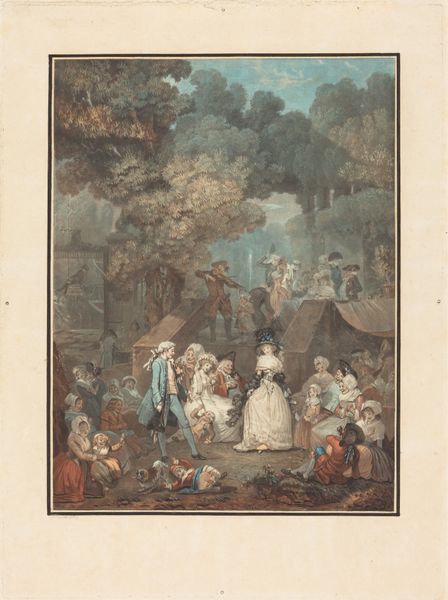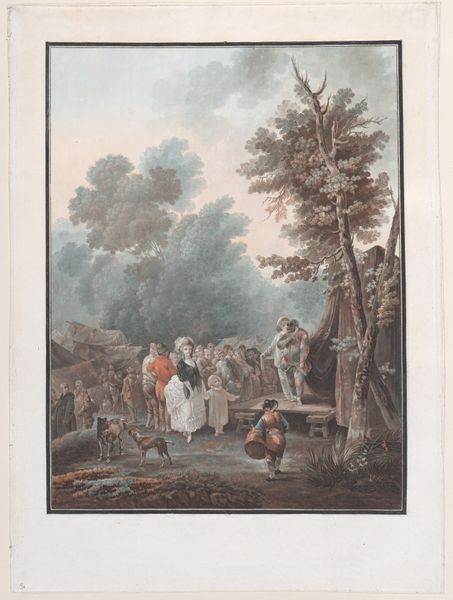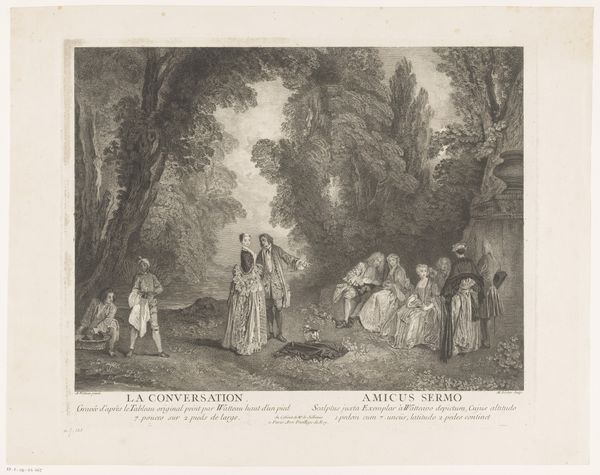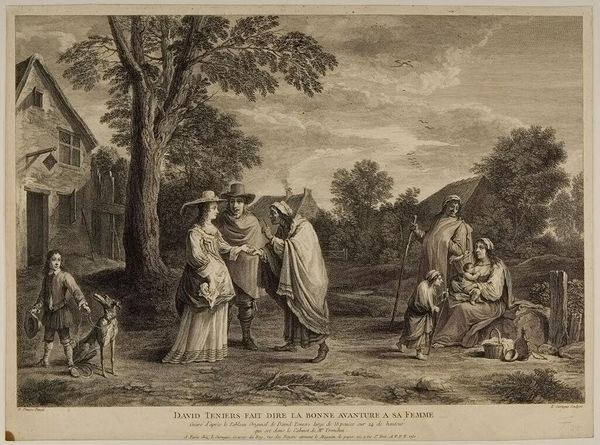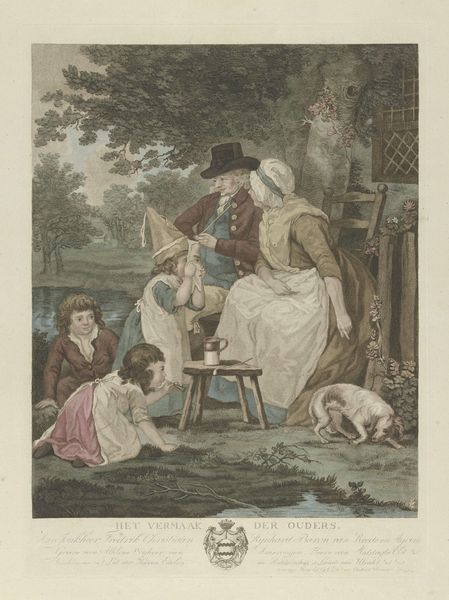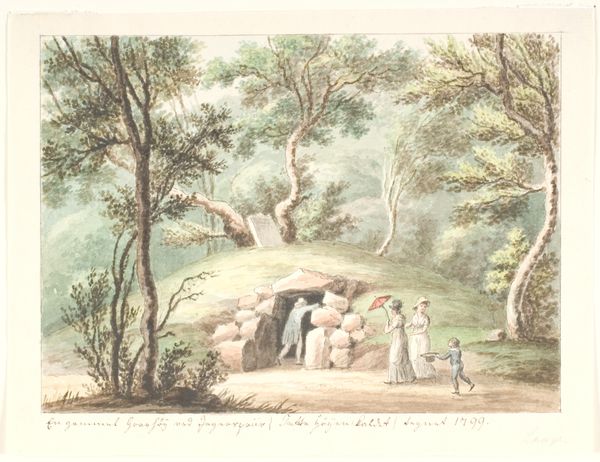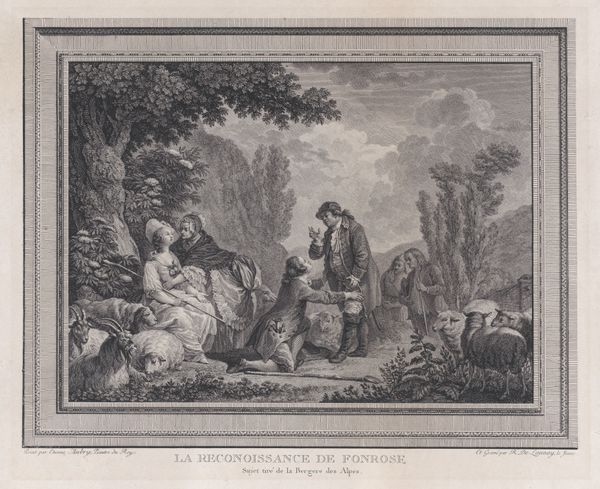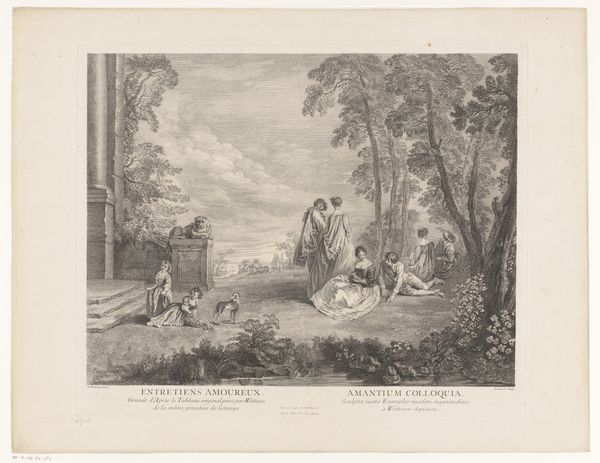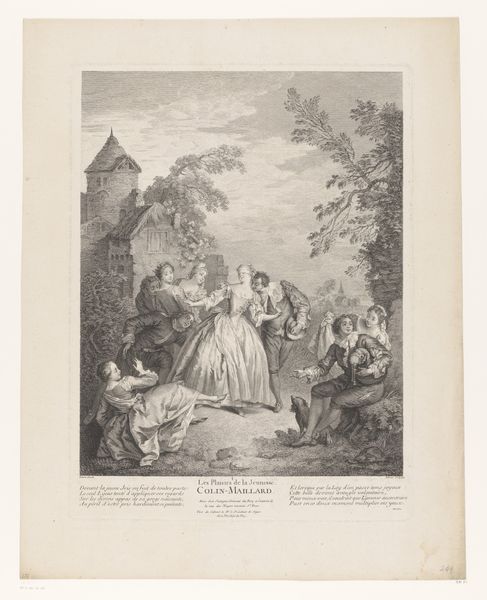
print, watercolor
#
neoclacissism
#
allegory
# print
#
watercolor
#
watercolour illustration
#
history-painting
Dimensions: height 507 mm, width 380 mm
Copyright: Rijks Museum: Open Domain
Curator: Let's consider this work, Allegorie op het onderwijs, created in 1809 by Ludwig Gottlieb Portman. It's currently held in the Rijksmuseum, executed as a watercolor print. What are your initial thoughts? Editor: Well, its atmosphere strikes me immediately. A delicate watercolor palette—the figures bathed in a serene, almost idealized light. It evokes a feeling of pastoral tranquility, with that carefully constructed asymmetry that arrests your eye. Curator: Indeed. Notice how Portman employs Neoclassical conventions here. The composition, for instance, relies on a distinct hierarchy. The central figures of Minerva and perhaps a personification of virtue or wisdom are elevated, literally and figuratively, presiding over a cluster of cherubic students. Editor: And these symbols are fascinating. Minerva, of course, as the goddess of wisdom, and the other figure perhaps symbolizing purity or enlightenment. Their placement within a classical landscape grounds the allegory in a specific visual language, accessible to the contemporary audience. I find it particularly striking how it frames the notion of civic virtue, placing education as paramount. Curator: Precisely. The arrangement of the figures and their relationship within the space underscore that these aren’t just pretty figures; they’re carefully designed elements. The very deliberate choices in line and tone speak volumes. It serves to legitimize and promote ideas around pedagogy prevalent during this era. It reflects societal values as expressed in institutional mandates of the time. Editor: Absolutely. The inclusion of these infant figures surrounding the classical ladies indicates a desire for civic virtue from an early age, and shows an optimistic vision of a future society, properly educated under enlightened principles. These are lessons conveyed within a formal, structured design. There's a push for social reformation happening here, right before our very eyes. Curator: This is, in fact, very revealing. And that pretty much elucidates what this piece stands for in this period in time, right? I'd say it also captures and exemplifies artistic, cultural and societal values back then. Editor: Quite right. It offers an optimistic reflection on an old and venerated institution during this specific historic era and through particular formal principles.
Comments
No comments
Be the first to comment and join the conversation on the ultimate creative platform.
